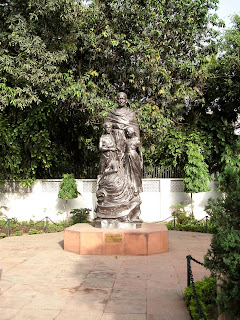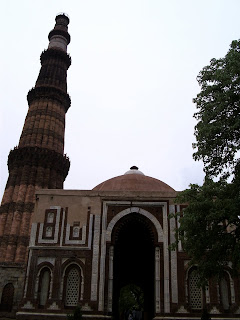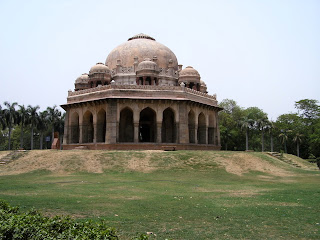After having a brief introduction to IRRAD on Monday, May 23, we were giving our objectives for our six week internship with IRRAD. One of our objectives is to establish four new Legal Aid Camps in the district of Mewat by the end of our six weeks. By the end of July, IRRAD would like to have established two hundred new camps throughout rural Mewat. Under the Legal Authority Act of 1987, every woman, child, disabled persons, scheduled castes, and those living below the poverty line (BPL) are entitled to free and competent legal services to ensure the opportunities for justice are not denied to any citizen. The Act mandates that the Central Government organize legal aid camps in rural areas with the purpose of educating the weaker sections of society, as well as to encourage settlements and disputes. The government has failed to establish these camps so IRRAD has taken up their job and has commenced action to establish the camps for rural India. On Tuesday, May 31, Tommy and I will be presenting a proposal we drafted to the Sonepat District Authority, asking for the government to collaborate with IRRAD to continue to establish the necessary legal aid camps.
An overall goal of IRRAD is good governance throughout rural India. Today, rural India faces a large disconnect with the rest of society. As a result, the villages face government corruption, are uninformed of their rights, and continue to live disadvantaged. IRRAD has developed a “learning by doing” model to empower the villagers of the Mewat District in order to be active participants in democracy. The final goal by 2012 is to have the 441 villages of Mewat become recognized as a good governance village. In order to be recognized as good governance village there must be established rights for food, education, healthcare, and social security benefits.
India's 21st article of their constitution is the right to a dignified life. The Supreme Court of India defined that right to include: education, access to safe drinking water and food, healthcare, and social security benefits. However, with the large disconnect between what is promised by the government and what actually happens, these rights are hardly fulfilled in the rural areas mostly due to poverty, corruption, and uneducated people.
IRRAD has established a program to train villagers of their rights and how to act on them. Today, IRRAD has 293 trainees and 147 of them are women. The training program lasts one year. The first step begins with educating the trainees of their rights and entitlements and then through awareness they will be able to participate in effecting good governance in their villages. The trainees take what they have learned and introduce and implement it in their own village. IRRAD educates the trainees on building community centers, clean water pumps, delivery rooms and dispensaries, orchards, improving schools and sanitation huts.
After completing my first week of work for IRRAD in India, it has been an eye-opening experience so far. Never in a hundred years could I have imagined I would be in the remote district of Mewat, India having lunch with villagers whose roots date back centuries. The villagers are just as amazed by us as we are by them and the experience has truly been lifting.
A second issue we will be working on, in collaboration with another group of students, is the rights of street vendors in India. Recently, the Supreme Court of India issued a decision mandating that the Street Vendors Association be regulated by the appropriate government by June 11, 2011. However, the decision failed to delegate which government, state or central, would be drafting the legislation. We will be drafting a proposal asking for Central Government legislation on street vendors’ rights.































































